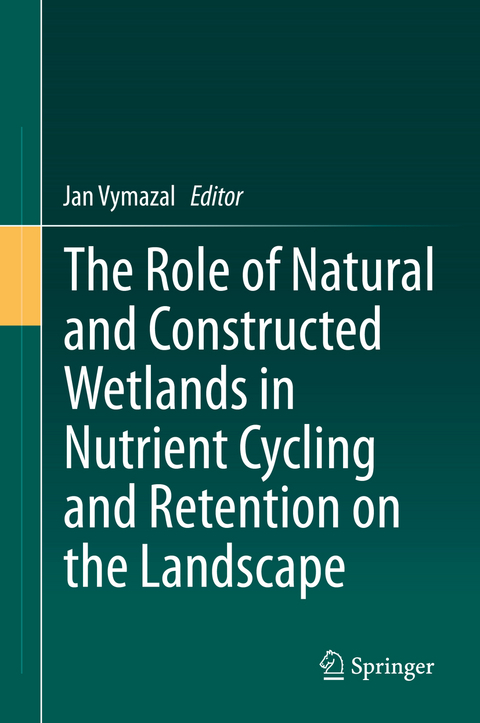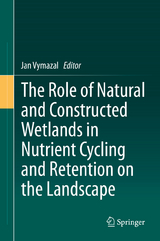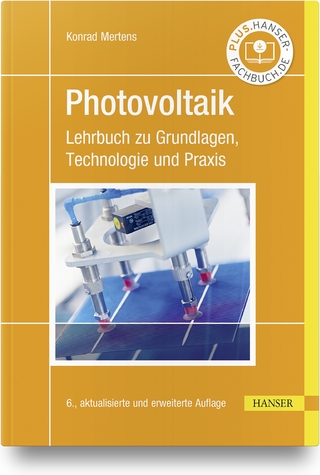The Role of Natural and Constructed Wetlands in Nutrient Cycling and Retention on the Landscape
Springer International Publishing (Verlag)
978-3-319-08176-2 (ISBN)
Jan Vymazal received his degrees (M.Sc. and Ph.D.) from Prague Institute of Chemical Technology. After five years in Water Research Institute in Prague he spent two years at Duke University, North Carolina. At present, he is affiliated with Czech University of Life Sciences Prague where he has become Full Professor at the Department of Applied Ecology. His principal research interests are in the areas of wastewater treatment in constructed wetlands and ecology of natural wetlands. He has published over 400 technical publications including two authored and seven edited books.
1. Biomass Production in Permanent Wet Grasslands Dominated with Phalaris arundinacea: Case Study of the Trebon Basin Biosphere Reserve, Czech Republic.- 2. Greenhouse Gas Fluxes from Restored Agricultural Wetlands and Natural Wetlands, Northwestern Indiana.- 3. Assessment of Immobilisation and Biological Availability of Iron Phosphate Nanoparticle-Treated Metals in Wetland Sediments.- 4. Spatial Variability in Sedimentation, Carbon Sequestration and Nutrient Accumulation in an Alluvial Floodplain Forest.- 5. Natural and Restored Wetland Buffers in Reducing Sediment and Nutrient Export from Forested Catchments - Finnish Experiences.- 6. Do Reflectance Spectra of Different Plant Stands in Wetland Indicate Species Properties?.- 7. Global Boundary Lines of N2O and CH4 Emission in Peatlands.- 8. Distribution of Solar Energy in Agriculture Landscape - Comparison Between Wet Meadow and Crops.- 9. Surface Temperature, Wetness and Vegetation Dynamic in Agriculture Landscape - Comparison of Cadasters with Different Types of Wetlands.- 10. Agricultural Runoff in Norway - the Problem, the Regulations and the Role of Wetlands.- 11. Subsurface Flow Constructed Wetlands Models: Review and Prospects.- 12. Behaviour of a 2-Stage Vertical Flow Constructed Wetland with Hydraulic Peak Loads.- 13. A New Concept of Multi-Stage Treatment Wetland for Winery Wastewater Treatment: Long-Term Evaluation of Performances.- 14. Polishing of Real Electroplating Wastewater in Microcosm Fill-and-Drain Constructed Wetlands.- 15. Relationship Between Filtering Material and Nitrification in Constructed Wetlands Treating Raw Wastewater.- 16. Single Family Treatment Wetlands Progress in Poland.- 17. Treatment Wetland for Overflow Stormwater Treatment - the Impact of Pollutant Particles Size.- 18. Treatment Wetlands in Rural Areas of Poland for Baltic Sea Protection.- 19. Long Term Performance of Constructed Wetlands with Chemical Dosing forPhosphorus Removal.- 20. Use of the Macrophyte Cyperus papyrus in Wastewater Treatment.- 21. Does the Presence of Weedy Species Affect the Treatment Efficiency in Constructed Wetlands with Horizontal Subsurface Flow?.
| Erscheint lt. Verlag | 14.10.2014 |
|---|---|
| Zusatzinfo | XVI, 326 p. 109 illus., 41 illus. in color. |
| Verlagsort | Cham |
| Sprache | englisch |
| Maße | 155 x 235 mm |
| Gewicht | 713 g |
| Themenwelt | Naturwissenschaften ► Biologie ► Ökologie / Naturschutz |
| Naturwissenschaften ► Geowissenschaften | |
| Technik ► Umwelttechnik / Biotechnologie | |
| Schlagworte | Constructed wetlands • Natural wetlands • nutrient cycling • Nutrient Retention in Landscapes • Water Quality and Water Pollution • Wetlands |
| ISBN-10 | 3-319-08176-4 / 3319081764 |
| ISBN-13 | 978-3-319-08176-2 / 9783319081762 |
| Zustand | Neuware |
| Haben Sie eine Frage zum Produkt? |
aus dem Bereich




